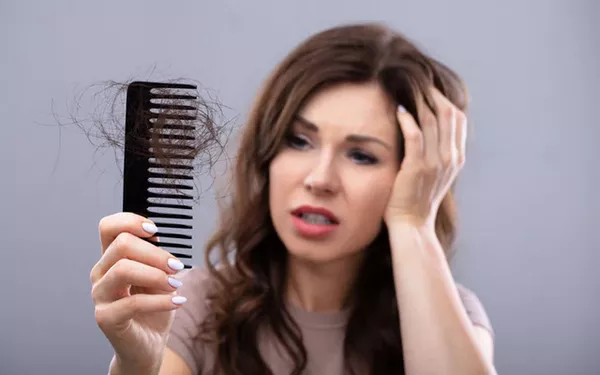Hair trends come and go, and for those seeking a dramatic change, bleaching remains a popular choice. While this transformative process can yield stunning results, it’s important to acknowledge the potential risks that come with it. One of the most concerning risks is the potential link between applying bleach on hair and the risk of hair loss. In this article, we will delve into the science behind this connection, understand the mechanisms at play, and explore ways to mitigate the risks while achieving your desired look.
The Chemistry Behind Bleaching
Bleaching involves the use of strong chemicals, typically hydrogen peroxide, to remove the natural pigment from hair strands. This process breaks down the melanin, responsible for hair color, through a chemical reaction. As a result, the hair shaft becomes more porous and vulnerable. While this change can lead to the desired lightened shade, it also exposes hair to potential damage.
The Hair Structure and Hair Loss
To understand the link between bleaching and hair loss, it’s essential to grasp the structure of a hair strand. Each strand is made up of several layers, including the cuticle, cortex, and medulla. The cuticle acts as a protective barrier, shielding the inner layers from external damage. Bleaching compromises this protective layer, making the hair more susceptible to moisture loss, brittleness, and breakage.
Bleaching and Hair Loss: The Connection
The correlation between bleaching and hair loss can be attributed to a combination of factors. Firstly, the weakening of the cuticle due to bleaching can lead to hair shaft thinning and breakage. Secondly, excessive bleaching can disrupt the hair growth cycle. Hair growth occurs in three phases: anagen (growth), catagen (transition), and telogen (resting). Bleaching-induced damage can prematurely push hair into the telogen phase, leading to increased shedding and potential thinning.
Mitigating the Risks
While the allure of a new hair color is undeniable, it’s crucial to approach bleaching with caution to minimize the risk of hair loss:
Consultation is Key: Before undergoing any bleaching treatment, consult a professional hairstylist. They can assess your hair’s current condition and provide insights into whether your hair can withstand the bleaching process.
Gradual Lightening: Opt for gradual lightening sessions rather than attempting to achieve your desired shade in a single sitting. This approach gives your hair time to recover between sessions and reduces the shock to your hair follicles.
Deep Conditioning: Invest in high-quality deep conditioning treatments. These nourishing products can help restore moisture and strengthen the hair shaft, minimizing the risk of breakage.
Limit Frequency: Avoid frequent bleaching sessions. Give your hair ample time to recover and regain its strength before subjecting it to another round of chemical treatment.
FAQs on Bleaching and Hair Loss
Q1: Can bleaching cause permanent hair loss?
While bleaching can lead to hair damage and increased shedding, it doesn’t necessarily cause permanent hair loss. With proper care and precautions, most hair can recover from the effects of bleaching.
Q2: Are there hair types more prone to bleaching-induced hair loss?
Yes, individuals with fine or thin hair might be more susceptible to the negative effects of bleaching. It’s essential for them to be cautious and consult professionals before undergoing the process.
Q3: Can natural remedies prevent bleaching-related hair loss?
Natural remedies like coconut oil and aloe vera can provide some nourishment to damaged hair, but they might not completely prevent hair loss caused by excessive bleaching. Professional care and proper hair maintenance are key.
Conclusion
Bleaching can offer a fresh and exciting transformation, but it’s crucial to approach this process with a full understanding of the potential risks, including the connection to hair loss. While the fear of hair loss shouldn’t deter you from experimenting with your look, it’s essential to prioritize hair health and take necessary precautions. Consulting a professional hairstylist, opting for gradual lightening, deep conditioning, and limiting the frequency of bleaching sessions are all steps you can take to enjoy a stunning new look while safeguarding the health of your precious locks. Remember, knowledge and care are your best allies in maintaining both style and hair well-being.

